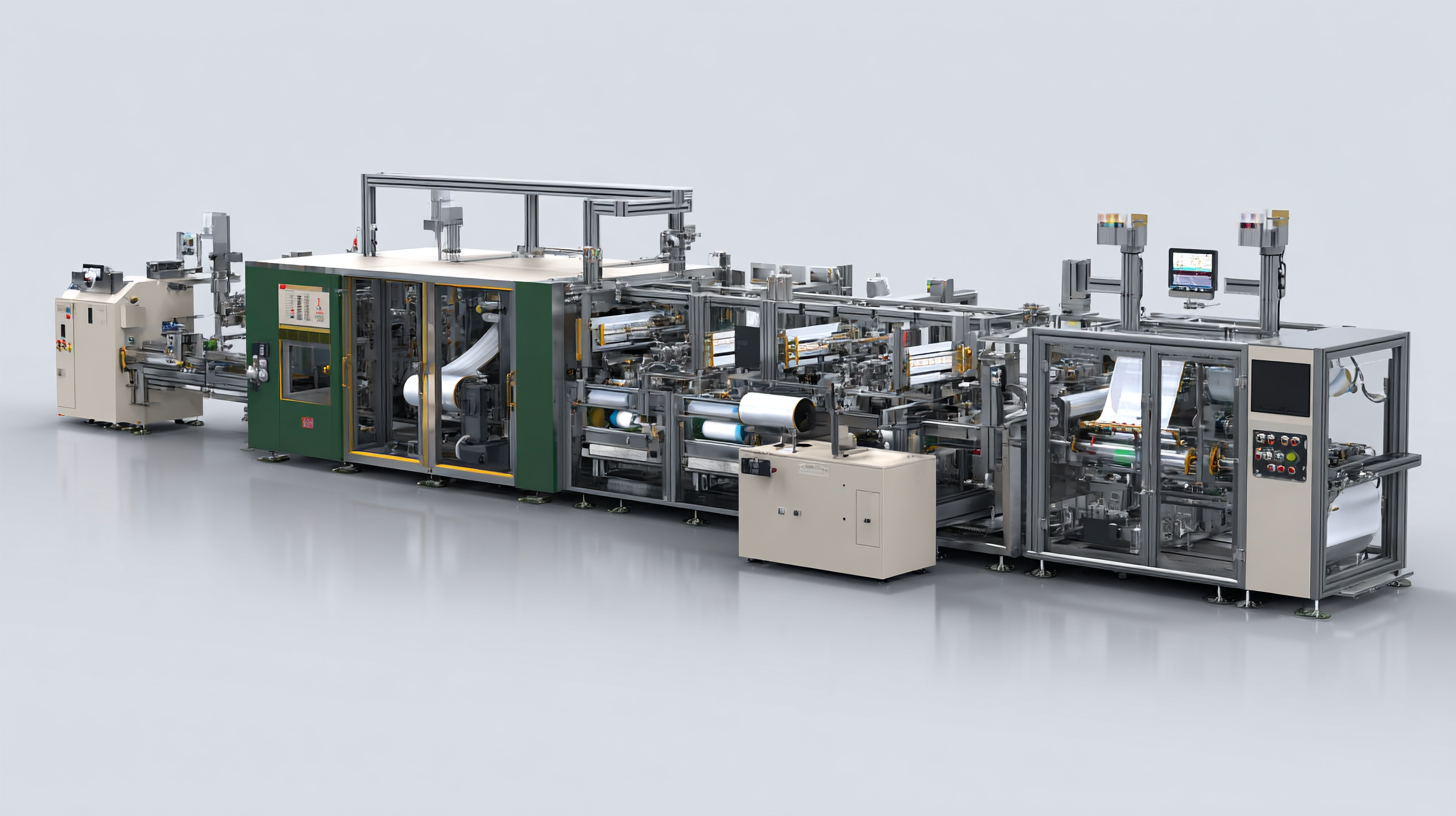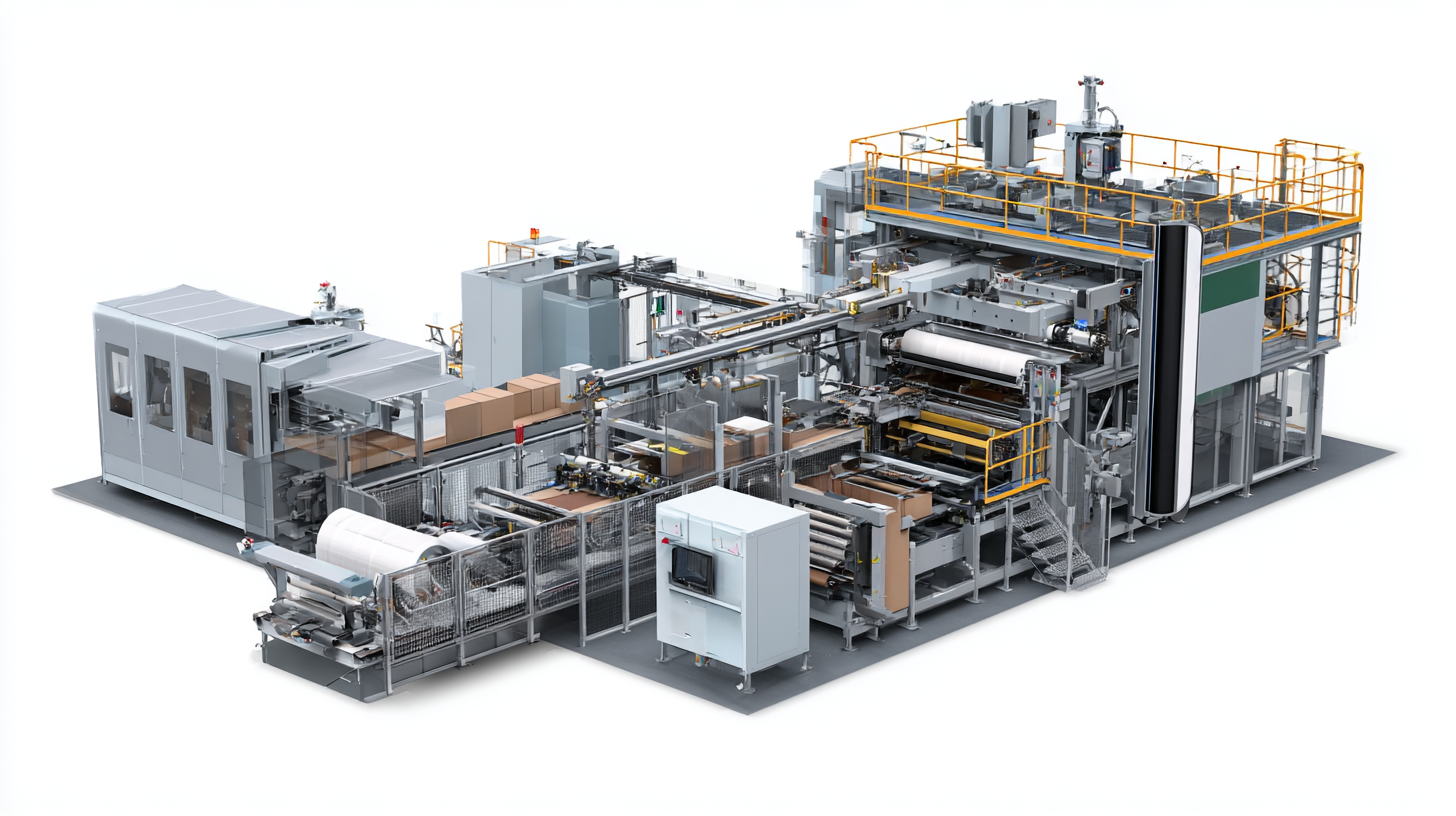Exploring the Future: 2025 Trends in Horizontal Packaging Machines and Their Alternatives
As we look towards 2025, the landscape of packaging technology is poised for significant transformations, particularly in the realm of horizontal packaging machines. According to the latest industry report by Smithers Pira, the global packaging machinery market is expected to reach $60 billion by 2025, with horizontal packaging machines playing a crucial role in this growth. These machines are favored for their efficiency and versatility, catering to various sectors such as food, pharmaceuticals, and consumer goods.
 The increasing demand for sustainable and innovative packaging solutions highlights the importance of exploring not only cutting-edge designs but also alternative technologies that may soon complement or compete with traditional horizontal packing methods. In this blog, we will examine emerging trends, technological advancements, and the potential shifts that will shape the future of horizontal packaging machines and their alternatives.
The increasing demand for sustainable and innovative packaging solutions highlights the importance of exploring not only cutting-edge designs but also alternative technologies that may soon complement or compete with traditional horizontal packing methods. In this blog, we will examine emerging trends, technological advancements, and the potential shifts that will shape the future of horizontal packaging machines and their alternatives.
Emerging Technologies Revolutionizing Horizontal Packaging Machines by 2025
As we look ahead to 2025, the landscape of horizontal packaging machines is poised for a transformative shift driven by emerging technologies. Innovations in artificial intelligence and robotics are set to redefine how products are packaged efficiently and reliably. For instance, advancements in AI-powered graders and robotic sorters are enhancing the accuracy of sorting processes, leading to higher productivity and reduced waste. These technologies not only streamline operations but also elevate product quality, aligning with the food industry's increasing emphasis on safety and compliance.
Moreover, the rise of cloud computing and IoT (Internet of Things) technologies will enable smarter, more connected packaging solutions. By integrating real-time data analytics into packaging processes, manufacturers can monitor operations continuously, making informed adjustments that enhance efficiency and sustainability. As packaging becomes more intelligent, we will witness a significant evolution in how goods are packaged, stored, and transported, meeting the demands of an increasingly eco-conscious market. The movement toward smart packaging technology not only minimizes environmental impact but also meets consumer expectations for transparency and quality, setting the stage for a new era in the packaging industry.
Sustainability Trends in Horizontal Packaging: Eco-Friendly Alternatives
As we approach 2025, the trends in horizontal packaging are significantly leaning towards sustainability, driven by increasing consumer demand for eco-friendly alternatives. The global fiber-based packaging market was valued at USD 337.7 billion in 2023 and is projected to grow to USD 348.2 billion by 2024, highlighting the shift towards more sustainable materials. Specifically, the paper bags market is expected to reach USD 10,438.2 million by 2035 due to rising regulations against single-use plastics in the USA, reinforcing the move towards paper-based solutions.
The trend towards biodegradable packaging also accelerates, with the biodegradable paper and plastic packaging market expected to reach USD 31.6 billion by 2032, growing at a robust CAGR of 10.1%. This shift signifies how crucial it is for businesses to adopt green practices.
**Tip:** Companies should consider investing in innovative materials such as sugarcane-based packaging, which is anticipated to grow at a CAGR of 9.7% from 2025 to 2030. Embracing these eco-friendly options not only meets consumer expectations but also aligns with global efforts to reduce environmental impact. Transitioning to sustainable packaging solutions helps embrace the future of packaging while enhancing brand image.
2025 Trends in Horizontal Packaging Machines: Sustainability Focus
Market Drivers for Horizontal Packaging Machines in Global Exports
The global market for horizontal packaging machines is currently experiencing significant growth, driven by various factors that cater to the evolving needs of the industry. One of the primary market drivers is the increasing demand for efficient and sustainable packaging solutions. As businesses become more aware of environmental concerns, they are seeking machines that not only enhance productivity but also minimize waste and energy consumption. This shift towards eco-friendly practices is prompting manufacturers to innovate and improve their horizontal packaging technologies, leading to more sustainable options.

Additionally, the rise in global exports is playing a pivotal role in the growth of the horizontal packaging machine market. As international trade continues to expand, companies are faced with the challenge of ensuring their products are securely packaged for longer transportation routes. This has led to a heightened demand for sophisticated packaging machinery that delivers speed and reliability, especially in industries such as food and beverage, pharmaceuticals, and consumer goods. As we approach 2025, the trend towards automation and advanced technology will likely dominate the market landscape, encouraging businesses to invest in state-of-the-art horizontal packaging solutions that meet both consumer expectations and regulatory standards.
Innovative Designs: Enhancing Functionality and Aesthetics in Packaging
The world of packaging is evolving rapidly, driven by advancements in technology and changing consumer demands. In 2025, we can expect innovative designs in horizontal packaging machines that not only enhance functionality but also elevate aesthetics.

Manufacturers are increasingly focusing on sustainable materials and customizable options, allowing brands to create packaging that resonates with their target audience while being environmentally friendly. The integration of smart technology will also enable real-time monitoring and adjustments, improving efficiency and reducing waste.
Moreover, as e-commerce continues to grow, packaging solutions must adapt to ensure products are delivered safely and attractively. Sleek, visually appealing designs that reflect a brand's identity will become essential for capturing consumer attention in a crowded market. Horizontal packaging machines will likely incorporate features that allow for greater versatility in design, accommodating different shapes and sizes without compromising speed or quality.
This fusion of functionality and aesthetics will redefine packaging standards, ultimately enhancing the consumer experience and reinforcing brand loyalty.
The Competitive Landscape: Key Players and Their Strategies for 2025
As we look ahead to 2025, the competitive landscape in the horizontal packaging machines market is expected to evolve significantly. Key players are adopting innovative strategies to capture market share in a sector projected to grow at a robust pace. Recent market analysis reveals that the demand for horizontal packaging solutions is driven by their versatility and efficiency, addressing the needs of various industries from food and beverage to pharmaceuticals. Investments in automation and smart technology integration are anticipated to enhance operational efficiency and reduce production costs, positioning leading manufacturers for success in a competitive market.
In parallel, alternatives to traditional packaging machinery are gaining traction. The rise of sustainable packaging solutions and eco-friendly materials reflects the industry's shift towards greener practices. Research indicates a growing consumer preference for environmentally conscious products, urging key players to innovate and adapt their offerings. For instance, the Human Microbiome market forecast suggests a remarkable compound annual growth rate (CAGR) of 20.42%, reaching approximately $2.38 billion by 2030, underlining a broader trend where consumer health and sustainability drive market strategies.
As businesses navigate these changes, staying ahead of the curve through strategic partnerships and technological advancements will be crucial for maintaining competitiveness in 2025 and beyond.
